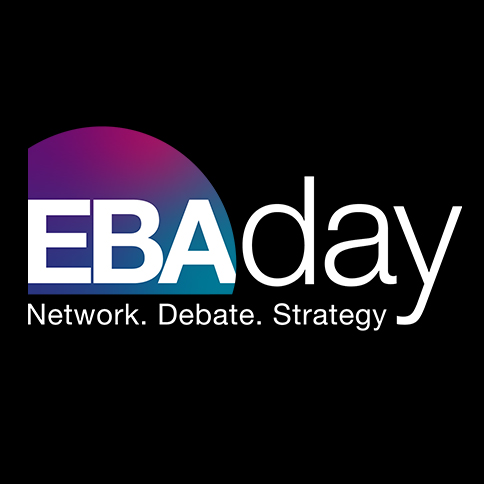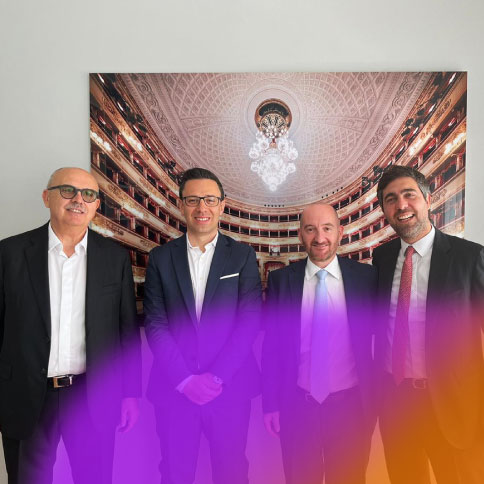Insights
A collection of our recent articles, white papers, webinars, reports and videos.
Demystifying Card Issuing: Understanding the Process and Significance

The card issuing industry continues to evolve and adapt to changing consumer needs, technological advancements, and regulatory developments. Innovations such as digital wallets, virtual cards, and biometric authentication are reshaping the landscape of payment solutions. Card issuers are embracing these developments to enhance security, improve convenience, and deliver seamless user experiences. The future of card issuing holds in fact the promise of even more flexible, secure, and personalized payment options for consumers worldwide.
By understanding the significance and intricacies of card issuing, we would like to give a deeper appreciation for the convenience and opportunities that payment cards provide in our everyday lives. Whether it's debit cards, credit cards, or prepaid cards, these little plastic rectangles enable us to make purchases, access funds, and enjoy a myriad of financial services. Behind the scenes, a complex process known as card issuing takes place and, in this article, we'll demystify card issuing, shed light on its significance, and explore the key steps involved.
What is Card Issuing?
Card issuing refers to the process of creating and distributing payment cards to consumers, allowing them to access financial services and make transactions. The issuing entity, typically a bank or financial institution, produces and provides these cards to customers. Card issuing involves a series of steps, from application and approval to card production, personalization, and delivery. The ultimate goal is to provide users with a secure and convenient payment method that aligns with their financial needs.
The Significance of Card Issuing
Card issuing plays a pivotal role in the modern financial ecosystem, facilitating economic transactions and empowering individuals with greater financial flexibility. There are a few key reasons why card issuing is significant:
Payment Convenience: Cards offer unparalleled convenience, allowing users to make purchases both in-store and online, eliminating the need for carrying cash. With the rise of contactless payment technology, cards have become even more convenient, enabling swift and secure transactions with just a tap or wave.
Financial Inclusion: Card issuing promotes financial inclusion by providing individuals with access to banking and payment services, even if they don't have a traditional bank account. Prepaid cards, for example, can be a viable solution for the unbanked and underbanked populations, enabling them to manage their finances, receive payments, and participate in the digital economy.
Security and Fraud Protection: Card issuers prioritize security, implementing various measures to protect users from fraud and unauthorized transactions. Features such as EMV chips, PIN verification, and tokenization enhance security and reduce the risk of card-related fraud. Additionally, card issuers often offer liability protection to shield customers from unauthorized charges.
Consumer Benefits: Card issuing entities frequently offer a range of benefits and rewards to attract and retain customers. These may include cashback programs, travel rewards, purchase protection, extended warranties, and access to exclusive events. Such perks enhance the overall value proposition of cards and incentivize card usage.
The Card Issuing Process
Now, let's delve into the key steps involved in the card issuing process:
Application and Approval: Individuals apply for a payment card, typically through a bank or financial institution. The issuer evaluates the application based on the applicant's creditworthiness, income, and other relevant factors. Upon approval, the process moves forward.
Card Production: Once approved, the issuer proceeds with card production. Modern payment cards are made of durable plastic and can be embossed or printed with the cardholder's name and other essential details.
Personalization: To enhance security and customization, the card is personalized by encoding a unique magnetic stripe or embedding a chip. This allows the card to be associated with the user's specific account and enables secure authentication during transactions.
Activation: Before the card can be used, it needs to be activated. This can be done through various channels, such as online activation portals, automated phone systems, or by contacting the issuer's customer service.
Distribution: Once activated, the card is delivered to the cardholder. It can be sent by mail to the registered address or made available for pickup at a designated branch. The issuer ensures that appropriate measures are taken to safeguard the card during transit.
Usage and Management: Cardholders can now use their cards to make purchases, access funds, and enjoy the associated benefits. The issuer manages the cardholder's account, tracks transactions, sends periodic statements, and handles any customer service inquiries or issues.
As already anticipated, the card issuing industry continues to evolve and adapt to changing consumer needs, technological advancements, and regulatory developments. Besides the presence of plastic cards there are some notable trends and developments that the card issuing industry is already facing:
Digital Wallet Integration: Card issuers are increasingly integrating their payment cards into digital wallet platforms such as Apple Pay, Google Pay, and Samsung Pay. This allows users to add their cards to these mobile wallets for convenient and secure mobile and contactless payments.
Contactless Payments: The adoption of contactless payments has been on the rise, driven by the need for quick and hygienic transactions. Card issuers are issuing contactless-enabled cards with near field communication (NFC) technology, enabling users to make payments by simply tapping their cards on compatible payment terminals.
Virtual Cards: Virtual cards, which are card details issued without a physical card, have gained popularity. These cards are typically used for online or mobile transactions, providing added security and convenience. Virtual cards can be generated instantly, allowing users to make purchases without waiting for a physical card to arrive.
Open Banking and API Integration: With the emergence of open banking initiatives and application programming interfaces (APIs), card issuers are collaborating with third-party fintech companies to provide innovative financial services and experiences. This allows for seamless integration of card services with various applications, enabling users to manage their finances more effectively.
Rise of Prepaid Cards: Prepaid cards, which are loaded with funds in advance, are gaining popularity due to their flexibility and accessibility. They offer a viable payment solution for the unbanked and underbanked populations, as well as for budgeting and travel purposes.
TAS Card Issuing Platform: build a personalized card program
A modern card issuing platform is one that enables individuals to access financial services, make transactions, and participate in the digital economy. These trends reflect the ongoing efforts of TAS in the card issuing industry to enhance security, convenience, and customization while adapting to changing consumer preferences and the evolving digital landscape.
To meet the evolving needs of its clients, the TAS Card Issuing Platform encompasses a range of features and capabilities that are key factors to build a truly personalized card program.
This modern platform has strong card personalization capabilities allowing issuers to customize their card programs in terms of set up, basic data and personal information associated with cardholders, type of cards, hierarchies, limits, fees, rates etc. Thanks to these high configurability features, each card program is unique and aligned with the issuer's business needs and strategy.
Besides personalization, one of the major concerns of TAS clients is security. For this reason, TAS has continually invested in security measures to protect its clientsagainst fraud and unauthorized transactions. Through sophisticated algorithms, the card issuing platform monitors, investigates and report transactions of a suspicious or unusual nature to ensure reliability 24/7.
Some of the greatest innovations the TAS platform brings to its clients is the ability to issue physical, virtual, and tokenized cards which can be added to the cardholders digital wallets and make mobile and contactless payments using their smartphones or other digital devices. Furthermore, the platform supports additional security measures such as encryption, multi-factor authentication, and risk management tools to mitigate risks associated with card-based transactions.
To guarantee an even more flexible, secure, and personalized payments, here are some of the key features the TAS card issuing platform supports:
Open API: to facilitate integration with third-party applications and services to guarantee seamless connectivity and collaboration with other fintech solutions.
Real-time Transaction Monitoring: the platform offers real-time transaction monitoring capabilities, providing issuers with visibility into cardholder transactions, including spending patterns, geolocation, and suspicious activities.
Card Management and Lifecycle Services: this includes functionalities such as card activation, deactivation, blocking, reissuance, and replacement.
Analytics and Insights: this allows issuers to gain valuable insights into cardholder behaviour, spending patterns, and trends. Data-driven insights enable issuers to make informed decisions, optimize card programs, and enhance customer experiences.
Scalability and Flexibility: it supports the growth and expansion of card programs, accommodating varying card types, multiple currencies, and evolving business requirements. The TAS Card Issuing Platform can handle increasing transaction volumes and adapt to changing market dynamics.
These key features empower card issuers to deliver secure, innovative, and personalized payment solutions to their customers. By leveraging the modern TAS card issuing platform, issuers can streamline their operations, enhance cardholder experiences, and stay competitive in the rapidly evolving payment landscape.
To discover more, contact our experts and request a free demo.
TAS @ EBAday 2023

20 - 21 June 2023 | THE IFEMA, MADRID
Advancing next generation payments - a quest for global interoperability
EBAday is coming back to Madrid this year, and we are excited to be among the sponsors of the event once again.
Bringing physical and digital together with TAS Remote Teller

TAS Remote Teller allows bank customers to carry out all the operations traditionally carried out in the branch with the teller and get in touch with a remote bank operator to enhance the bank-customer relationship thanks to technology.
An automated counter where you can carry out banking operations and speak remotely with an operator. It is TAS Remote Teller, a solution at the centre of a pilot project within one of the major Italian banking groups. The goal is to offer an automated branch, which allows you to supervise even remote areas, reducing costs significantly compared to a traditional branch. «Without however renouncing the quality of the service, the possibility of cross-selling and generating empathy and trust in the banking customer - says Valentino Bravi, CEO of TAS. By reducing branches to save costs, there is the risk of losing quality, because the branch is increasingly distant from the customer. At the moment this solution is being tested at some pilot branches of one of the major Italian banking groups and the extension of this model to other branches is also planned».
The customer talks to the operator via video
With a view to a hybrid evolution of bank branch models, the Remote Teller adapts to unattended branches: simple sitting rooms are enough to ensure privacy and comfort for the customer, characterized by the bank's brand identity, of course. But it also finds a place in already manned branches, to streamline traditional operations and allocate the offices to other consultancy or value-added activities. «The customer who enters the branch authenticates himself with his payment card at the counter – explains Bravi. In front of him he will therefore find a maxi screen, or even more than one, where he can get in touch with a remotely connected teller, who will follow him in all the traditional operations that are carried out at the bank teller, through simple steps and a video monitoring». The TAS Remote Teller solution offers a very wide range of accessible services, covering more than 95% of the operations that are usually carried out at a bank branch.
More trust, more cross selling
The advantage is therefore to offer the same quality of service provided in presence. But by reaching customers in unmanned areas and also activating cross-selling strategies by leveraging the bank-customer relationship, even if remotely. «The possibility of speaking with an operator generates empathy and allows tellers to better understand the needs of the customers they are following - underlines Bravi. It can therefore happen that you intercept and have to respond to new customer needs: the solution therefore allows you to pass the connection to another operator, specialized for example in mortgages, or investments. A relationship of trust is generated with the operator, as well as with the bank, precisely thanks to the technology, favouring customer retention, as well as the sale of new products".
The launch of the pilot with an Italian bank
TAS also announces that a pilot project has started with one of the four major Italian banks. The goal is to bring the Remote Teller to the branch and extend this new model to various branches in the area. «Within 2 months we integrated our solution – explains Bravi. Naturally it is a customizable tool on the needs of the bank and can also be integrated through the API interfaces».
The future evolution: the shared branch
In the future, this technology could also allow banks to review their real estate strategies: think of a bank branch in a shopping centre or at a hospital. Or, again, within spaces shared with other players, banking and non-banking. «Beyond the regulatory limits, the evolution we are starting to think about is that of the shared branch, like a multi-bank store - concludes Bravi. There are a series of problems to overcome, such as cash management, but it would certainly allow banks to reduce costs, creating shared areas, where an assistant who takes care of receiving customers is sufficient".
Accelerate the digitization of payments
TAS has created a series of end-to-end solutions for digital payments, which allow banks and e-money players to digitize payment management, also launching innovative solutions: from payments through digital wallets, up to PagoPA. «Furthermore, our Global Payment Platform (GPP) integrates with any type of payment and offers a series of advanced services, security for example - declares Bravi - but also advanced analytics solutions and anti-fraud systems» TAS also manages the world of POS services, ATMs and advanced counters. «The latter are ideal tools for people who are familiar with monitors and computers or portable devices – Bravi said. But the basic functions are so simple that, according to our surveys, they are also used by the more mature clientele who are reluctant to use digital devices. In case of difficulty, they can always contact the teller, who will be connected and will supervise the processes at each step, just like at a traditional bank teller".
Author: AziendaBanca by G.C “TAS. Lo sportellista da remoto, per unire fisico e digitale”
English Translation by TAS
New payment experiences – SoftPos

One of the latest TAS solutions aimed at improving the user and merchant shopping experience is SoftPos, a product that is able to transform Android smartphones and tablets into contactless payment terminals, without the need for any hardware support.
SoftPos is an application that merchants can download onto their devices to turn any Android (NFC-enabled) mobile device into a payment acceptance device.
SoftPos is a completely software-based alternative to traditional payment terminals. With SoftPos, merchants can carry out contactless transactions on their mobile devices, facilitating the acquisition of PINs and authentication, without the need for additional hardware and maintaining a very high level of security.
This is a huge advantage, especially for small merchants who can make the most of the solution thanks to the low costs and operational advantages of the technology, especially in sectors where the use of contactless cards has become widespread.
In fact, for micro-businesses SoftPos is a simpler and cheaper way to accept credit or debit card payments, avoiding having to spend on the purchase of extra hardware devices.
In addition, traditional hardware can present greater barriers to adoption because you need to get to know the device while using your smartphone faces less risk of error and have a greater propensity to experiment with new use cases.
Even for large commercial realities, subject to large influxes of customers especially at certain times or periods of the year, the advantages of SoftPos are many: the possibility of offering a payment process without interruptions, the multiplication of payment points without investments in physical workstations, the possibility of acquiring payments on the go, the ease of training both the merchant and the employees on the process, the virtualization of the receipt with automatic sending to the customer's email.
For the cardholder, it will only be necessary to decide which payment method to use between cards and mobile wallets (Apple Pay, Google Pay, Samsung Pay) on their device and wait a few seconds until the transaction is completed. If a PIN is required, the app will display a PIN PAD where you can enter the data.
All this in maximum security: SoftPos is managed by TAS and is certified on the highest security standards for payment applications.
The App is available on the Google Play Store and can be used in white-label mode, allowing the rebranding of the solution or easily integrate it with any App already in use by the merchant.
The next developments include the extension of payments to the Bancomat circuit and, as soon as possible, a similar version for IOS.
Embedded Insurance: The Future of Seamless Protection for Consumers

Embedded finance is revolutionizing the financial industry, and one of its most significant components is embedded insurance. But what exactly is embedded insurance? How does it work, and why should you care? In this article, we will explore the ins and outs of embedded insurance, from its definition to its benefits and use cases. Whether you're a fintech entrepreneur or a curious consumer, read on to discover how embedded insurance fits into the larger picture of open finance, PSD2, BaaS (Banking as a Service), and more.
What is embedded insurance
Embedded finance is a relatively new concept that refers to the integration of financial services into non-financial products or services. In other words, it means embedding financial functionalities within other applications and platforms, such as e-commerce websites, social media apps, or even cars. As a result, companies are able to offer their customers more convenient access to a range of financial products and services.
One of the most promising areas where embedded finance has been gaining traction is insurance.
Embedded insurance works by integrating insurance policies into products or services that are not primarily focused on providing insurance. This allows consumers to subscribe insurance policies directly through third-party platforms as part of their purchase journey on an e-commerce website or via their bank account without having to visit an insurer's website or office physically.
By integrating these two industries together we have facilitated better options for people who need financial security but don't want any hassle with extra paperwork and applications.
Embedded insurances are available across various industries such as travel, automotive, healthcare and more. For example, when purchasing travel tickets online, it may be possible for customers to add travel insurance coverage at checkout.
Benefits of Embedded Insurance
This innovation provides several advantages for both customers and insurers/business.
From customers’ point of view one of the key benefits is convenience. With traditional insurance, customers have to go through a lengthy process of signing up for policies, submitting claims, and waiting for reimbursements. Embedded insurance simplifies this process by integrating it into existing products and services. Customers can buy an insurance policy with just a few clicks on their digital devices instead of filling out lengthy forms and waiting for approval. This means fewer steps for customers, leading to an increase in conversion rates.
Another benefit is cost-effectiveness. Because embedded insurance is integrated into other products and services, it does not require separate marketing efforts or distribution channels. This can result in lower costs for both insurers and customers and a better customer loyalty. By offering embedded insurance, companies can provide added value to their customers without requiring them to seek out third-party providers. This makes it more likely that they will continue using the company’s products or services in the future.
Embedded insurance creates a more seamless customer experience by providing a one-stop-shop for all financial needs. Customers can manage their finances and protect themselves at the same time, making it easier for them to stay on top of their finances. For example, when purchasing a car or booking travel online, customers can easily add on relevant insurance coverage without having to navigate through separate websites or applications.
For insurers, embedded insurance opens up new revenue streams by tapping into previously untapped customer bases that may have never considered purchasing standalone policies before. Moreover, integrated data analytics mean that companies can collect more information about their clients' behavior patterns to offer personalized coverage options.
Businesses benefit from embedded insurance by being able to offer additional value-add services that differentiate them from competitors. By offering embedded insurance products or partnering with insurers who do so, companies can improve customer loyalty while increasing revenue streams.
In short, the benefits of embedded insurance extend far beyond convenience - it provides better user experiences; increases customer satisfaction; drives new revenue streams for businesses while reducing exposure risks.
The key aspect of embedded insurance is to anticipate customer needs at the right time by shortening the traditional steps of the customer journey. In this way, we move from a planned purchase model to an impulse one in which consumers do not research and compare the different options available on the market: the goal is to acquire customers before the main transaction (i.e. purchase of a flight ticket) is completed.
Embedded insurance is shaping the future of finance positively. As more industries embrace open finance concepts like BaaS (Banking as a Service), we can expect these integrations to become even more prevalent in our daily lives soon.
Problems and Opportunities related to Embedded Insurance
As with any emerging technology or trend, embedded insurance comes with both challenges and opportunities.
One of the main problems is regulatory compliance. As embedded insurance operates within the framework of PSD2, businesses must navigate a complex set of regulations to ensure they are compliant. This can be time-consuming and costly.
Another problem is customer awareness. Many consumers may not understand what embedded insurance is or how it works, which could make them hesitant to use it. Businesses need to educate their customers about the benefits of this type of insurance so that they feel confident in using it.
However, as with any challenge, there are also opportunities for growth and innovation. With the rise of Baas (Banking-as-a-Service) platforms and Open Finance initiatives, businesses have more access than ever before to integrate new financial services into their products such as loans or payments while offering comprehensive protection through embedding an insurance product like travel medical coverage right where users need it most – during a transaction itself.
Furthermore, through utilizing data analytics technologies combined with IoT devices installed in cars or homes for example, insurers can offer personalized policies based on individual needs instead of blanket coverage plans – thus creating a competitive advantage over traditional insurers who rely solely on manual underwriting processes.
Navigating these challenges will ultimately lead to new innovations that bring greater value to both businesses and consumers alike in today's fast-paced digital world.
Use cases of Embedded Insurance
The rise of embedded insurance has opened doors to various use cases across industries, providing businesses with innovative ways to monetize and enhance their offerings. One such example is within the travel sector, where booking platforms can now seamlessly offer tailored travel insurance products alongside flight or hotel reservations. Airlines offer travelers coverage for flight delays, cancellations, lost luggage, and other related incidents through an add-on feature during booking or check-in processes, without any additional steps required from you as a customer. By integrating these services directly into the customer journey, clients benefit from a more streamlined experience while companies tap into new revenue streams through commissions earned from selling these integrated policies.
In addition to travel, the automotive industry stands to gain significantly from embedded insurance solutions. As car manufacturers increasingly incorporate advanced technology in their vehicles, offering customized auto insurance policies based on data collected by sensors could provide accurate risk assessment and pricing for customers. This personalized approach offers potential savings for responsible drivers while encouraging safer driving habits overall.
Similarly, within the realm of e-commerce and retail, embedding warranty or protection plans during product checkout can lead to increased conversion rates and added value for customers seeking peace of mind when making purchases online. By simplifying this process through seamless integration with existing point-of-sale systems, merchants create an opportunity for upselling without disrupting the customer experience.
Emerging digital health platforms have shown great promise in leveraging embedded insurance as a way to expand access to healthcare coverage among users globally. With telemedicine growing rapidly worldwide due in part to recent global events – there lies vast potential in offering relevant medical malpractice or cyber liability coverage options directly within these digital platforms themselves.
It's evident that industries as diverse as finance (BaaS), transportation (PSD2) and healthcare are all incorporating embedded finance—particularly open finance—to maximize opportunities offered by innovations like PSD2 towards delivering greater value-add propositions around essential services such as banking-as-a-service (BaaS) and beyond.
Embedding insurance offers an array of practical applications that companies can integrate into their business models seamlessly. By doing so they provide more value-added services to customers while also reducing administrative overheads associated with traditional insurances schemes.
Conclusion
Embedded insurance is a game-changer for both the insurance and financial industries. It has the potential to revolutionize how people access and use different financial services while providing more convenience, cost-effectiveness, and personalized experiences.
With PSD2 and BaaS opening up opportunities for new entrants in the market, embedded finance will continue to be an exciting area of growth. And as embedded insurance becomes increasingly popular among consumers, we can expect more partnerships between banks, insurers, fintechs, retailers and other players in the ecosystem that offers various services under one roof.
While there are still challenges that need to be addressed such as data privacy issues or regulatory barriers when it comes to offering cross-border solutions. The future looks bright for this emerging trend with many companies exploring ways they can leverage their existing platforms to offer embedded insurance products.
As technology continues evolving rapidly within both industries – we can only imagine where this innovation may take us next.
TAS Global Payment Platform for the Embedded Finance
Several financial institutions choose the TAS Global Payment Platform (GPP) to provide a better payment experience and enable faster time-to-market. The GPP platform is suited to any ecosystem operator between banks, technology providers, and distributors of financial products to guarantee a great and seamless customer experience. We work with businesses in digital banking, BNPL, insurance, travel and payments thanks to a highly configurable platform with open APIs.
Our embedded finance offering comes with scalable and reliable micro-services, flexible workflow configurations and a centralized custom overview that permits companies higher dynamicity.
Contact us to discover how we can help you leverage embedded finance for your use case
Specialization is the key to Open Finance

Fintech user experience, bank specialization. To stay competitive in the open finance ecosystem, banks need to replicate the user experience of fintechs - simple and catered to customers' individual needs. Therefore, their strategy should focus on specialization, as well as a on streamlined, personalized offer. According to Matteo Bravi, Chief Strategy & Transformation Officer at TAS, « Banks must upgrade their front-end services to deploy those attractive features designed for different customer types that have proven to be successful with fintech. This requires making the most out of available customer data and becoming a partner in customers’ daily decisions and long-term plans by customizing services and expanding offerings beyond traditional banking or insurance domains».
The new customer clusters
Rethinking front ends means keeping in mind that digital channels don't only belong to the youngest group. In fact, if one looks at profitability, internet and mobile banking must target the most profitable segments such as silver, as well as niche markets with high added value that require specialization. As Bravi explains, «The wealthiest market is composed of seniors, professionals, corporates and small businesses. These markets remain untapped and fintechs, without a banking license, cannot provide loans or salary-backed loans as a financial institution can. They may take away a portion of the market by acting as an Electronic Money Institution (EMI) but they do not have the same opportunities of finance».
The generic offer loses value
Some banks are now concentrating on specific industries in order to create tailored solutions. As an example for tourism, this could include single-use prepaid cards as an alternative to bank transfers for paying travel agencies. The insurance sector has seen the introduction of four-handed bank-insurance agreements linking insurance premiums with credit cards. Today generic payment cards are no longer successful, so it is necessary to find a reason for them to exist – comments Bravi, and offer a personalized service based on a specialized area such as seniors or SMEs.
Personalization: the advantage of data
Specializing in a niche market alone is not enough. In order to compete in the open finance world, banks must also focus on offering personalized and rapid services. Taking advantage of AISP licenses will allow banks to provide account aggregation to customers for a convenient experience; by having all of their financial data in one location, users can more easily manage their accounts and make payments. This feature may be most beneficial to the bank as they gain a better understanding of the customer’s assets and buying behavior that they can then use to better identify impulse purchases. An example would be instant insurance; when an account holder uses their card at the bank’s checkout, the app sends out a notification suggesting the purchase of quick travel cover – adds Bravi. It is true that these are products with a fair margin, but if tailored and integrated with other profitable services, they can certainly increase the perceived value by customers.
Be quick, even in IT
The path towards open finance is clear - the customer should be a top priority in any business strategy. To succeed, banks must specialize in market segments and niches, while using data to create tailored offers. Technology is an essential element in this competitive market, leveraging investments made over the years. « In order to revolutionize user experience as fintechs have done, banks must integrate their existing systems with new technologies. The important thing is to make these systems flexible enough to allow quick innovation» Bravi explains. Every bank has its own unique IT infrastructure, and that's why it is important for us to find specific solutions to meet their needs while maintaining pre-existing systems, and working on the back and front end with tailor-made proposals».
Author: AziendaBanca by G.C "TAS. La specializzazione è la chiave dell'Open Finance"
English Translation by TAS
TAS acquires Mitobit

Milan – 18 April 2023 – TAS S.p.A., a leading company in Italy in the supply of software and services for banking and financial applications, and the head of a group of companies of the same name (the “TAS”) also present in Europe and America, announces today the acquisition by the subsidiary Global Payments SpA of the entire share capital of Mitobit Srl (hereinafter "Mitobit"), a Tech-Enabler founded in 2014 and specialized in the supply of software applications and services for the Payments, Banking, Insurance and Fintech sectors. Mitobit has a strong focus on technological innovation and digitization, providing services in the IT area, including software development and as-a-service platforms, mainly focused on payments and e-money for the Finance sector.
For TAS it is the fourth acquisition since July 2022 of an emerging company in the Italian Fintech scene, after ASTRO IT, Krisopea and Nemos.
"Our acquisition policy aims to enhance the excellence of the TAS group so that we can provide our customers with complete, integrated solutions and services that enable them to compete in an increasingly dynamic payments market where cutting-edge technology and industry experience are key differentiation factors. Mitobit has these characteristics and we are very excited that it is now part of our group" comments Fabio Bravi, Head of M&A, Special Projects and Corporate Developments of TAS.
“At Mitobit, technology is the lifeblood of our team. Our mission is to build innovative software that meets each company's unique needs. This makes us incredibly proud to be part of the TAS group: two like-minded entities devoted to creating technological breakthroughs and a customer-oriented approach. We are confident that, with our combined expertise and experience, we will be even better placed to deliver high-quality products tailored to an ever-evolving industry where solid foundations and professional standards are paramount”. Davide Carnevali and Luca Falcon, directors and founding partners of Mitobit, declared.
TAS has been assisted in the transaction by KPMG as Financial Advisor and by Lexia Avvocati for the legal and labor law aspects.
Mitobit was assisted in the transaction by the lawyer Alessandro Diani of the LegalTaxLab network for the legal aspects and by Studio Muliari for the due diligence, tax and employment aspects.
From the US Market: Our Mastercard NEX service keeps getting better

In 2020, TAS introduced a new service to allow out-of-the-box connectivity to all the major US signature networks, such as Mastercard and VISA, and to the major Debit Networks such as Star, NYCE and Pulse. This delivers real benefits and convenience to both Issuers and Acquirers who are able to easily, quickly and securely accept a wide range of traditional and innovative payments, with TAS acting as an aggregator of network traffic towards Mastercard Network Gateway Services (MNGS).
Mastercard has renamed the service to Mastercard Networks Exchange (NEX), an intelligent routing platform that provides one connection to global and regional payment rails, reducing the cost and complications of managing individual connections. This unified approach from a trusted connectivity partner can help overcome fragmented network access and create unrivaled economies of scale.
We offer NEX in a flexible SaaS mode deployed on the Cloud for simple onboarding as a stand-alone service, seamlessly interfacing with your platforms and applications. The solution has proven to be successfully scalable and able to manage a growing volume of network traffic.
More updates also in the issuing area where we started delivering our 3D Secure component to the US market. This optimizes our customers' buying experience while increasing sales and reducing fraud. The 3D Secure component permits the application of the EMVco standard and allows the creation of customized authentication experiences for cardholders during transactions. Today, as a result of requests from our customers, we have expanded the set of supported transactions and provide our clients with a full EMVCO-compliant chip and PIN.
Regarding the acquiring area we are onboarding a new client, a US based Fintech company focused on streamlining payments and data for the Insurance Industry by providing cost-effective payment solutions and tools to drive insurance carrier adoption and customer conversion. They will manage through the NEX Gateway Credit and Debit transactions, Card Present and e-commerce.
TAS France renews the HDS certification for the treatment of health data

The audit held on 20 March for the maintenance of the HDS certification (hébergeur de données de santé) for TAS France gave a positive outcome.
This is a very important certification, imposed by French legislation, in order to be able to process, and even simply host, health data on its servers.
Contact us
Get in touch to discover how we can help in achieving your business goals



